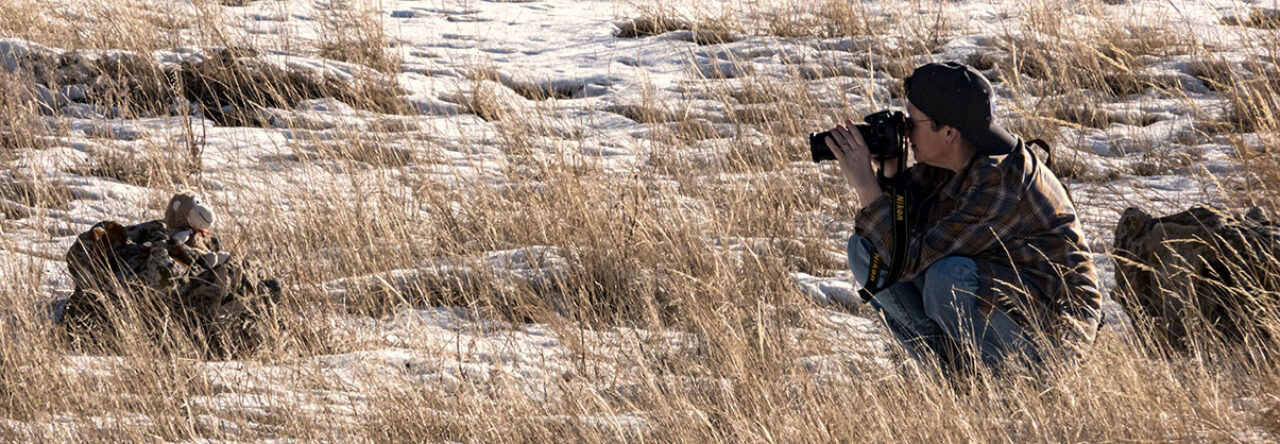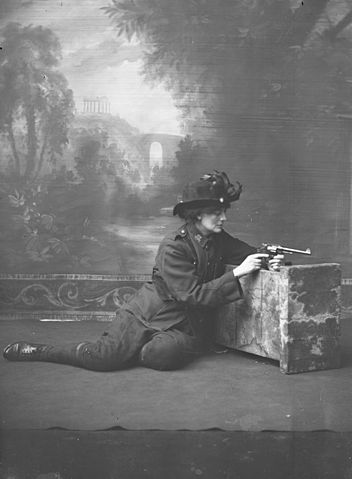From her earliest days, Countess Markievicz learned to help others. She took these lessons into later life, which eventually led to a sentence of death for her part in the 1916 Easter Uprising.
Countess Markievicz was born in 1868 in London as Constance Gore-Booth to a wealthy family. Her father, Sir Henry Gore-Booth was an explorer.
The Countess learned many life lessons from her father. He was concerned about the well-being of the staff on the family estate in Lissadell. Her sister, Eva, was involved in the English labor movement and women’s suffrage, but Constance was not interested in such affairs.
She wanted to be an artist. She studied in London and then in Paris. It was here she met Count Casimir Dunin Markievicz. He married Constance in 1901, two years after his wife died, making Constance a Countess.
During their wedding vows, she rather notably omitted the part about obeying her husband.
Casimir was known to duel men who insulted her, but their once close relationship waned after a few years. She found a greater love – her country.
In 1903, they moved to Dublin. The Countess continued with her art, earning recognition as a good landscape artist. Using her reputation, she founded the United Artists Club in 1905 to bring together all Dublin artists.
She still had no desire to become in politics whatsoever. In 1906, however, that would all change.
The Countess had rented a cottage just outside of Dublin to Pádraic Colum. When he moved out, he left behind copies of “The Peasant and Sinn Fein,” which advocated independence from Britain. The Countess read the document and found she agreed with what was written.
Ireland was suffering through cycles of famine, plague, and poverty. Most taxes collected went to England. There was nothing being invested in Ireland. Many wanted the right to govern themselves.
Two years later and armed with her ideals, the Countess joined the political fray. She became a member of both Sinn Fein and Inghinidhe na hEerann, a women’s movement. She ran against Winston Churchill and lost.
Still, the Irish did not immediately trust and accept her. That, too, changed.
She stopped standing during God Save the King. She started giving speeches urging outright rebellion. She started a youth training camp that taught boys to shoot the British — and taught the shooting herself.
She soon became an icon of sorts for the women of the rebellion. When asked fashion advice, she told women to “dress suitably in short skirts and strong boots, leave your jewels in the bank, and buy a revolver.” In later parades, she showed up so heavily armed “that the casual onlooker might be readily pardoned for mistaking her for the representative of an enterprising firm of small arms manufacturers.”
The youth training camp she founded in 1909 was Fianna Éireann in 1909.
She was arrested and jailed for the first time in 1911. Her crime? Participating in a demonstration against the visit of George V.
In 1913, she took the lessons she had learned in childhood from her father and sister and applied them to all. She ran a soup kitchen to feed those who could not afford food, often using her own money.
Britain went to war on Aug. 4, 1914. Many Irishmen volunteered. Others, such as Countess Markievicz, considered the suspension of Home Rule, the campaign for Irish self-government, a step too far.
The Easter Uprising of 1916 was a result of those unhappy with the situation in Ireland. The Countess actively participated in fighting in Dublin.
She began by helping in anyway she could. She was a nurse. She sewed rebel flags. She delivered messages to the highest ranking members of the rebellion.
she settled into her role as a sniper. Holed up at the College of Royal Surgeons, she spent the majority of the Easter Rebellion on the rooftop, shooting at royalists at the nearby Shelbourne Hotel.
She was second in command at St. Stephen’s Green to Michael Mallin in James Connolly’s Citizen Army, which was formed in direct response to the “lockout” of workers. The army held out for six days. They only surrendered when they received a copy of the surrender order signed by Padraig Pearse, the leader of the Easter Uprising.
When she turned herself in, the Countess reportedly gently kissed her gun and declared, “I am ready.”
The Countess and others were paraded through the streets of Dublin, where they were verbally abused by spectators. Dubliners were angry that she and her cohorts had turned the center of Dublin into a battlefield, destroying large portions of the city.
Sixty-nine other women were also arrested, but only the Countess was held in solitary confinement in Kilmainham Jail. The British felt that if they isolated her, she would not be a problem.
The Countess was brought before a courts martial. She told the court, “I did what was right and I stand by it.”
Before the trial was over, she brought a young man to tears while he described her assault on British officers. She had pulled apart his testimony. He recanted and changed his story.
She was sentenced to death, but General Maxwell, who was in charge of procedures, commuted her sentence to life in prison because she was a woman. The Countess responded as only she could.
“I do wish your lot had the decency to shoot me.”
In 1917, the British government issued a general amnesty for those involved in the Easter Uprising. The Countess was released, but she was not finished fighting.
She was jailed again in 1918 for participating in anti-conscription activities. While in jail, she was elected as a Member of Parliament as a member of Sinn Fein, making her the first elected female politician.
One hundred years later, the British still would not acknowledging this fact. The Countess refused to take her seat because it required an oath of allegiance to the British king.
She became a member of the Dáil Éireann, or republican government. She became one of the first women in the world to hold a cabinet position, as Minister for Labour, from 1919 to 1922.
The Dáil spent much of their time on the run, but the Countess was not to be deterred.
She installed pianos in their office so they would appear to be merely a music school.
When meeting with a rosary bead factory representative on behalf of some unions, she continually interrupted him by informing him that keeping her there too long would bring in a military raid. “Twenty minutes,” she said, then “ten minutes,” etc. The representative caved.
Once, when she was about to be raided, she fled the office with sensitive papers in a briefcase. Not knowing where to store it, she put the bag in the window of a friendly secondhand store. She gave the suitcase an outrageously high price tag, and it sat there, in plain sight, for weeks before someone came to retrieve it.
She spent time during the Irish War of Independence in jail or on the run, fighting every step of the way. She was opposed of the 1921 treaty that ended the war. She believed those who signed it were traitors to Ireland. Michael Collins said she would never truly understand why he signed the treaty because she was English.
The Countess left the government in January 1922 due to her opposition to the treaty. She fought for the Republican cause during the Irish Civil War, including the occupation of Moran’s Hotel in Dublin.
With the civil war over, she toured America and was re-elected to the Dáil, but also managed to find herself in and out of jail often, sometimes without cause.
During one of her incarcerations, she and 92 other suffragette women went on strike. Less than a month later, she was released. Suffragette women on hunger strikes were trouble for the British government and the Dáil did not want to tread into such a scandal.
In 1926, the Countess joined Fianna Fáil. She died a year later, age 59, of complications related to appendicitis, five weeks after the election that would see her return to government.
By the time of her death, Countess Constance Markievicz had given away all of her wealth. According to “Mná Na HÉireann: Women who Shaped Ireland,” by Nicola Depuis, she died in a public ward, “among the poor where she wanted to be.”
More than 250,000 people lined the streets of Dublin for her funeral. Eamonn de Valera, leader of the Easter Uprising, founder of Fianna Fáil, and Ireland’s prime minister, read the eulogy. The Free State government refused a state funeral for her.
Irish playwright Seán O’Casey said of her, “One thing she had in abundance—physical courage; with that she was clothed as with a garment.”
Eamonn de Valera said of her, “Whoever misunderstood Madame, the poor did not.”
And the poor remember her today.



Leave a Reply